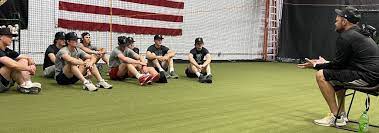

Throwing sports, such as baseball, football, and javelin, may seem like vastly different activities on the surface. However, they share a common foundation in their mechanical principles. At their core, all throwing sports involve generating force and velocity through a coordinated movement of the body, culminating in the release of an object. This fundamental similarity is rooted in the biomechanics of the human body, which dictates the most efficient way to generate power and speed.
One of the key mechanical similarities between throwing sports is the use of the kinetic chain. The kinetic chain refers to the sequential activation of muscle groups, starting from the ground and moving up through the body, to generate force and velocity. In all throwing sports, the kinetic chain is initiated by the legs and hips, which provide the foundation for the throwing motion. The energy generated by the lower body is then transferred through the core and into the upper body, ultimately resulting in the release of the object.
Another crucial mechanical similarity is the importance of proper arm and shoulder alignment. In all throwing sports, the arm and shoulder must be positioned in a way that allows for optimal energy transfer and release. This involves maintaining a consistent angle of attack, using the shoulder and elbow joints to generate torque, and snapping the wrist and forearm to impart spin and velocity on the object. The precise alignment of the arm and shoulder is critical for generating maximum speed and accuracy.
The final mechanical similarity between throwing sports is the use of follow-through and deceleration. After releasing the object, the body must slow down and come to a stop, which is achieved through a controlled deceleration of the arm and shoulder. This follow-through phase is essential for maintaining balance, reducing stress on the joints, and preparing for the next throw. By understanding and applying these mechanical similarities, athletes can improve their performance and reduce the risk of injury across various throwing sports.
More in depth sport specific analysis to follow


